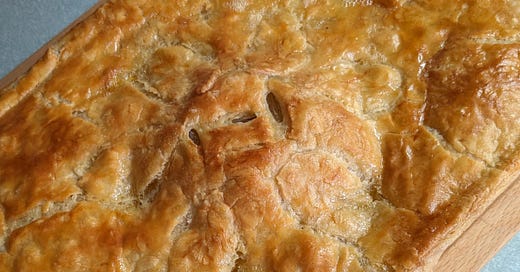
In this year of more elections globally than ever before, perhaps cows, sheep, pigs, poultry and other livestock should be the ones allowed to vote. They, not people, represent the highest number of mammals on earth, at 60 percent. (Just 4 percent of animals are wild.) Humans, deciding the future of the world, account for only 36 percent of all mammals.
64 countries not counting the European Union are going to the polls. As of last week, they were joined by the UK, voting for a new government in 36 days from today, on the Fourth of July. Sad to report, it seems the Brits have little confidence that that key American date will confer upon them Independence from the parlous UK state of the nation. A move has been afoot to add a rebellious “None of the Above” to the ballot paper.
It’s an option already established in some surprising countries: Argentina, Belarus, North Korea, Mongolia, Kazakhstan and Uruguay. Golly. More obviously democratic adopters include France, Spain, Norway, Switzerland, Canada - and the single US state of Nevada. It seems voters worldwide are increasingly dissatisfied with their political systems and representatives. Yet in the UK, the petition to add “None of the Above” has only garnered 6,272 signatures.
We need comfort in our despair. Say hello to pie.
My father had an Election Night ritual. It was exactly the same as the ritual he established for his favourite TV event, the Eurovision Song Contest, that competition for the song of least dubious quality (although ‘Waterloo’ did launch Abba worldwide), first held on May 24, 1956, in Lugano, Switzerland. We would all assemble in the room far enough up in the house and drafty enough that our enthusiasm for regularly watching its tiny telly was limited. We were given sheets of blank paper and pencils and encouraged to scribble down our nominated winners then compare our notations. Fine for the Eurovision Songsters but surely a forfeit, with general elections, of our right to privacy.
Both nights were occasions for Comfort Food, which, regardless of season, my father felt the interminable televised events required. Before he taught himself to cook, this meant sardines on toast. Once he felt confident in interpreting British cooking diva Delia Smith, it was a Chicken Pie. Pies are so soothing.
Australians may claim ownership of meat pies as an almost national dish, but the first known pies are associated with the ancient Egyptians, around 9500 BC. Pies in different forms moved early along the spice route to Greece and Italy, then onwards into Europe. Their thick crusts turned them into the portable take-away food of 13th and 14th century English farmhands and urban workers. A mince pie (not the Christmas chopped sweetmeats filling) was on the menu in 1413 at the coronation of England’s Henry V.
Pies, unlike politics, are honest fare. But the more we learn about the food and drinks we’re ingesting, the more consumer confidence in the food industry plummets. 19,642 people across 18 countries were canvassed recently by the EIT Food Consumer Observatory. The agency is European as were the countries it surveyed. But in these social media times, the developed world reflects similar views, so their findings are worth reporting.
Only 44 percent of respondents believe the food they eat is healthy. Only 53 percent believe their food is safe. And despite what they’re told by manufacturers, just 36 percent believe what they eat is sustainable.
Not only is there little trust in the openness and competency of the food sector, but the public doesn’t think it properly cares for its producers and providers either. Farmers are the most trusted group, with 67 percent believing they do a good job. Bravo. But small recompense for farmers finding it increasingly challenging to make a living.
Retailers, restaurants and caterers come next. At the very bottom of the list slump mega-profitable food manufacturers, with only 46 percent of consumers saying they trust them and 27 percent actively distrusting them. Just 38 percent believe they care about consumers’ concerns, and only a shaming 37 percent believe them transparent about how they prepare and sell food.
American statistics surely can’t differ that much - and may be worse, despite the $14 billion marketing budget the US spends annually on food, beverage and restaurant advertising. Throwing good money after poor nutrition?
With the cost of nourishing food so high, it’s no wonder people rely increasingly on ultra processed foods to make their stomachs feel full, even while they are aware these are damaging their health.
We may trust farmers, but their fresh produce is no longer affordable. Big Food Biz cuts the profits of farmers and producers to the bone while developing processed food replacements like protein bars and powders. These are now under the microscope for potentially damaging gut health. “Protein bars are often packed with isolated fibres and sugars that don’t digest well and instead ferment in your gut to cause bloating, gas, or diarrhoea,” says gut health expert Christ Dubberley of Incontinence Shop, not a logo that will appear on any t-shirt of mine. Protein bars are also so much more expensive than nutritious and quickly-made muesli.
Why would anyone imagine that a company called Eat Your Mouth Off selling a chocolate-flavoured breakfast cereal ‘100% plant-based’ has your best interests not theirs at heart? (Have I missed something? Has a cereal ever been anything other than 100% a plant?)
Eat Your Mouth Off’s 22 grams of protein per bowl is almost half the average woman’s daily needs of 45 grams and a man’s 55 grams. Two portions of meat, fish, nuts or tofu are a healthier equivalent, providing the same grams of protein plus other nutritional elements this cereal lacks. But they do bear a price in prep time and money.
My father was crushed whenever Eurovision panelists awarded the UK ‘Nul Points’ (zero points). Until now, that has only happened twice. But the UK scoring four times at the bottom of the board makes it feel it was a regularity. Which is why we depended for comfort on his Chicken Pie.
Not a fan of béchamel sauce, I’ve tweaked his version, replacing it with puréed chestnuts and using his vegetables only to flavour the stock. If you can afford the prep time and money, let the pie comfort you, too - before, during, and after the elections. It’s an economical fridge cleaner-out-er, using up whatever may be past its best. Floppy broccoli? Saggy carrot? All good for its rich stock. What lifts this pie from the familiar and makes it dinner-party elegant are the chestnut sauce and the flavour of the porcini mushrooms. This may sound like a pie for cold weather but it’s perfect all year round, served in this summer-ish season with a baby spinach leaf salad and buttery, nutmeg-scented mashed potatoes.
Feeds 4-6 voters
1 free-range chicken or 2 whole breasts on the bone
1 pint light stock or water
2 medium carrots, scrubbed but not peeled
1 celery stalk, washed and trimmed
1 bay leaf
4 black peppercorns
1 small onion, unpeeled
50g/2oz butter
3 leeks, white part only
handful dried porcini, about 30g/1 oz, soaked in warm water to cover
250g/½lb chestnut or small portobello mushrooms, wiped, trimmed and cut in quarters
250g/½lb canned or vacuum-packed unsweetened chestnuts
50g/2oz pancetta or bacon
¼ pint white wine, or dry sherry (optional)
¼ pint single/table cream
small bunch flat-leaf parsley, leaves only roughly chopped
1 packet puff pastry
1 egg, beaten
Put the chicken in a deep pot with the next six ingredients. Cover with light stock or water and bring very slowly to a simmer. Skim off any froth. Keep the chicken at a gentle simmer until cooked through, 20-30 minutes. Turn off the heat and let the chicken cool in the broth. When cold, take it out, remove its skin, lift it off the bones in the large chunks it naturally falls into. Return the skin and bones to the stock and bring back to a boil, covered. Then remove the lid and at a low boil, continue until the stock is reduced by half.
Cool then strain, discarding the vegetables and bones and refrigerate. Once cold, remove the solidified fat. Cut the chicken into large pieces and lay in a baking dish.
In a frying pan, melt 50g/2oz butter. Add the pancetta and the washed and trimmed leeks sliced into circles 6mm/¼ ins wide and gently soften in the butter. Drain with a slotted spoon and add to the chicken.
If necessary, add more butter to the pan and toss the quartered mushrooms until coated and beginning to soften. Drain the porcini over a bowl into a sieve lined with two paper towels, reserving the water. If they feel gritty, wash them under running water. Otherwise, squeeze them and slice then add to the mushrooms. Pour the strained soaking water into the pan and cook all together until the water has almost evaporated.
Add the chestnuts and stock and wine to a small pan (and water if necessary to make up the amount of ¾ pint) and simmer for 30 minutes or until the chestnuts are soft.
Remove six chestnuts when cool enough, break them into small pieces and add them to the chicken dish. Puree the rest of the mixture in a blender and season to taste. Stir in the cream then enough stock to pour over the chicken to provide a generous amount of sauce.
Gently toss to evenly distribute the ingredients throughout, most easily done with clean hands. Place a pie flute or upturned eggcup in the middle of the dish to support the pastry.
Heat the oven to 180C/375F.
Roll out the pastry to a circle large enough to cover the pie dish and with 2cm/1in to spare. Dampen the rim of the pie dish. Lay the pastry over the filling and fold the excess edge back under and press down onto the pie dish with the tines of a fork to seal. Glaze with the beaten egg, pierce a few steam holes with a fork and bake in the centre of the oven 35-40 minutes or until golden.






One of the best/worst things to happen to pie was the Scots, proud creators of both the lasagne pie and the mac n' cheese pie. They are exactly what they sound like, a portion of carbs in a pastry shell. DELICIOSO with a hangover (hello August in Edinburgh...) but also 🤮.
The chestnuts do indeed make it seem like winter fare but it looks and sounds delicious. I could see making it without the chestnuts perhaps. Still, it needs a thickener--mashed-up potatoes? cream? or that béchamel you chose to forego?